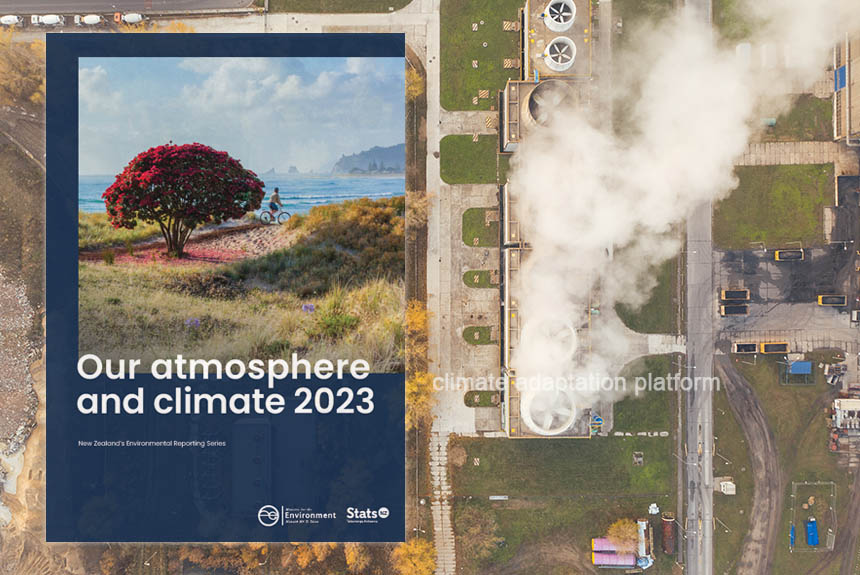New Zealand’s latest report, “Our Atmosphere and Climate 2023,” published on 11 October 2023, is unequivocal in its claims and provides evidence that greenhouse gas emissions from human activities are putting pressure on the country’s climate.
The stable climate that New Zealand has enjoyed over the past 10,000 years has allowed its unique species and ecosystems to thrive. And a deciding factor where to build its cities and down. However, growing emissions from human activities are putting pressure on its natural environment.
In Aotearoa, New Zealand, its annual average temperatures have already increased by 1.26°C degrees Celsius from 1909 to 2022 due to GHG emissions, which are projected to grow in the future and will likely surpass 1.5°C above pre-industrial levels by early 2030.
Although this temperature rise appears tiny, it already has considerable impacts in the country through more frequent medium-term droughts, ocean warming to record levels, and glacial ice retreats. Sea levels around parts of Aotearoa have risen twice as fast in the past 60 years as in the first half of the 20th century. Extreme weather events are increasing in frequency and severity, causing loss and damage to nature and people due to variations in rainfall patterns.
These changes threaten what the country values most: safety, security, livelihoods, economy, well-being, living and recreational spaces. Around 750,000 New Zealanders live in areas exposed to flooding, including urban centres and 500,000 buildings worth more than $145 billion. Some cultural and natural environments and biodiversity significant to Māori are also at risk.
The report draws from the recently updated Stats NZ indicator data and insights from the research literature to highlight pressures on the atmosphere and climate.
Alongside the report, New Zealand’s Ministry for the Environment also provides a digital storytelling platform, which includes photos, maps, videos, graphics and interactive features, shows:
- how climate change is causing glaciers to disappear and snowlines to retreat, impacting biodiversity;
- trees in forests to produce more seeds, increasing the number of pests that predate on birds;
- oceans to warm, rise and become more acidic, which is impacting marine species; and,
- stronger cyclones, hotter heatwaves and more frequent droughts and wildfires result in losses and damages for nature and people.
Read the “Our Atmosphere and Climate 2023” report to learn about Aotearoa, New Zealand’s climate change trends, risks, and future climate projections.
The “Our Atmosphere and Climate 2023” report is “the latest in a series of environmental reports produced by the Ministry for the Environment and Stats NZ. It is part of the third cycle of reports released under the Environmental Reporting Act 2015 (the Act), following our atmosphere and climate reports in 2017 and 2020.”
Source:
Our atmosphere and climate 2023. (2023, 11 October). Ministry for the Environment. Retrieved from https://environment.govt.nz/publications/our-atmosphere-and-climate-2023



Leave a Reply